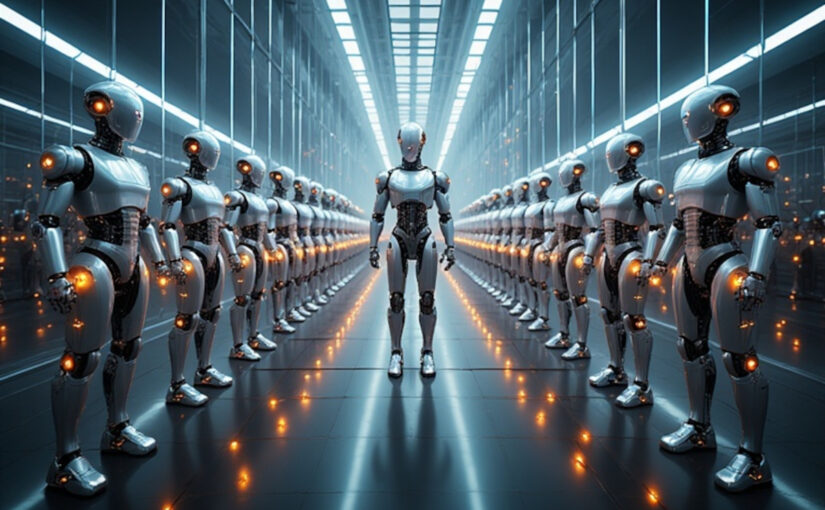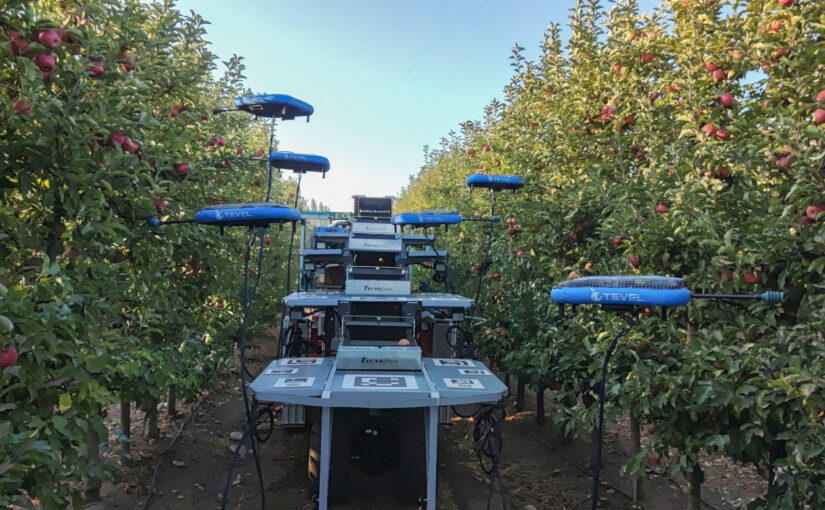Introspection, that quiet inner dialogue where humans ponder their own thoughts, feelings, and intentions, sets us apart in profound ways. It allows us to step back, question our reasoning, and adjust our course. As artificial intelligence systems like large language models (LLMs) grow more sophisticated, researchers wonder if these machines might one day glimpse their own “minds.” In the 2025 paper “Emergent Introspective Awareness in Large Language Models” by Jack Lindsey, published in Transformer Circuits, this question takes center stage. The study probes whether LLMs can genuinely reflect on their internal states or if their self-reports are just clever imitations drawn from training data.
Continue reading AI’s Inner Mirror: How 2025 Experiments Reveal LLMs Glimpsing Their Own ‘MindsCategory: AI & Robotics
What Will Be the Hourly Cost of Work of a Humanoid Robot?
In the fast-evolving world of robotics, humanoid robots are no longer science fiction; they are poised to reshape industries from warehouses to hospitals. Companies like Tesla, with its Optimus project, Figure AI, and Agility Robotics are leading the charge, developing versatile machines that mimic human form and function for tasks requiring dexterity and mobility. These advancements promise efficiency gains, but a key question looms for businesses: what will it actually cost to deploy them hour by hour? As technology accelerates, the economics of robot labor could disrupt traditional workforce models, offering savings that make automation irresistible. This article explores the projected hourly costs, drawing on recent research to unpack the factors at play.
Continue reading What Will Be the Hourly Cost of Work of a Humanoid Robot?Flying into the Future: How Israeli Drones Are Revolutionizing Fruit Harvesting
Agriculture has long been a tale of human ingenuity meeting nature’s demands. From the wooden plows of ancient farmers to the steam-powered tractors of the Industrial Revolution, each era has seen tools evolve to ease the backbreaking labor of tending crops. Yet today, a perfect storm of global challenges threatens this balance. Seasonal fruit picking faces acute labor shortages, worsened by COVID-19 travel restrictions that stranded migrant workers and left orchards heavy with unpicked produce. In places like the United States and Europe, up to 10 percent of fruit rots on trees annually due to a lack of hands, costing farmers billions and disrupting food supply chains . Enter Israeli innovation: Tevel Aerobotics Technologies’ Flying Autonomous Robots (FARs), AI-powered drones that promise to harvest fruit with precision and without fatigue. This technology not only addresses immediate crises but also heralds a new chapter in farm tech, where robots complement the human spirit that has always defined farming .
Continue reading Flying into the Future: How Israeli Drones Are Revolutionizing Fruit HarvestingFrom Cornfields to Compute Powerhouse: Project Rainier Transforms Indiana into an AI Frontier
A Year of Radical Reinvention
Just over a year ago, the landscape near South Bend, Indiana, was a sea of golden cornfields swaying under Midwestern skies. Local farmers tended to their crops, and the hum of tractors was the loudest sound breaking the rural calm. Today, that same site pulses with the quiet roar of innovation: a sprawling data center that stands as one of the United States’ most pivotal hubs for artificial intelligence. This facility powers Project Rainier, a monumental AI compute cluster developed in partnership with AnthropicAI. The transformation did not happen by accident. It reflects a deliberate push by Amazon Web Services (AWS) to anchor cutting-edge technology in unexpected places, turning agricultural heartland into a cornerstone of global tech infrastructure.
Continue reading From Cornfields to Compute Powerhouse: Project Rainier Transforms Indiana into an AI FrontierMachines Mimic Masters: Why AI Outshines MFA Grads at Stealing Literary Voices
You feed a prompt into an AI like Grok or Claude. “Write a short story in the style of Ernest Hemingway about a fisherman in the Gulf Stream.” A crisp paragraph emerges, built from taut sentences and clipped verbs. The sea rolls like a big hill under a boat that smells of bait and regret. The rhythm punches like a left hook. Understatement hangs heavy with unspoken loss. In an MFA workshop at Iowa or Columbia, a student fresh from dissecting The Old Man and the Sea takes a crack at it. Their version bloats with adjectives, self-conscious flourishes, and a therapy-session vibe that Hemingway would have dismissed as “pretty but useless.” The AI nails the iceberg theory in seconds. The student drowns in exposition.
Continue reading Machines Mimic Masters: Why AI Outshines MFA Grads at Stealing Literary VoicesIs the AI Bubble Finally Deflating? A Look at the Latest Data
The last two years delivered an AI sugar rush, with splashy demos and boardroom pressure to “get something into production” fast, only to collide with a sobering reality: productivity wins are inconsistent and the human oversight bill is steep. Multiple studies now suggest that the initial promise of easy gains is giving way to concerns about accuracy, governance, and cost control, prompting a visible reassessment across enterprises and academia alike.
Continue reading Is the AI Bubble Finally Deflating? A Look at the Latest DataAI’s Wikipedia Rescue Gone Wrong: Fueling a Misinformation Vortex for Dying Languages
AI-powered tools have unlocked Wikipedia’s vast knowledge trove for every tongue, even those spoken by mere thousands across remote Arctic outposts and Pacific islands. Large language models drive automated translation systems that have surged content volume in endangered dialects, turning a once-sparse digital presence into a sprawling archive. This noble push to democratize information now uncovers a shadowed flaw. Rapid expansion ignites a vicious cycle known as the “doom spiral,” where error-laden machine-generated articles embed deeply into digital ecosystems, birthing waves of even more defective material. Non-speakers pour AI-translated text into Wikipedia editions, letting inaccuracies cascade and imperil the survival of these fragile languages.
Continue reading AI’s Wikipedia Rescue Gone Wrong: Fueling a Misinformation Vortex for Dying LanguagesJapan’s Convenience Stores Go Robotic: The Filipino Workers Behind the Machines
Walk into any Japanese konbini at 3 a.m., and you’ll find shelves stocked with fresh onigiri, hot coffee brewing, and someone ready to help. But look closer at some stores, and that “someone” might be a sleek robot avatar controlled by a worker sitting thousands of miles away in Manila. This isn’t science fiction. It’s the new reality of Japanese convenience stores grappling with labor shortages in Japan through an unexpected fusion of robotics in retail and remote work.
Continue reading Japan’s Convenience Stores Go Robotic: The Filipino Workers Behind the MachinesThe Paradox of AI Productivity
Generative AI tools, heralded as liberators from mundane labor, have instead forged a subtle chain around our daily rhythms. OpenAI’s ChatGPT, launched in late 2022, arrived amid promises of streamlined workflows and reclaimed time, yet for many knowledge workers, it has amplified the very grind it was meant to alleviate. This irony, the AI productivity paradox, lies at the heart of a growing unease in professional spheres: technology that enhances output often extends the workday, capturing value for firms and consumers while workers toil longer for scant personal gain.
Continue reading The Paradox of AI ProductivityFrom Inbox Chaos to Smart Support: How Small Teams Win with Generative AI
Small companies are joining the generative AI movement because it is finally affordable, accessible, and quick to deploy, turning support from a cost sink into a growth lever for lean teams. Surveys of small and medium businesses show rapid adoption, with most SMBs experimenting with or using AI and reporting efficiency and margin improvements, which makes customer interactions a natural first beachhead. In service contexts, AI reduces manual effort and speeds up resolution by drafting messages, classifying issues, and surfacing relevant knowledge in real time. Across recent data, a majority of SMBs using AI report measurable benefits like faster case handling and higher revenue, while many are planning further investment over the next year. For support leaders, the takeaway is simple: modern AI can raise response quality, scale with demand, and personalize experiences without increasing headcount.
Continue reading From Inbox Chaos to Smart Support: How Small Teams Win with Generative AI







